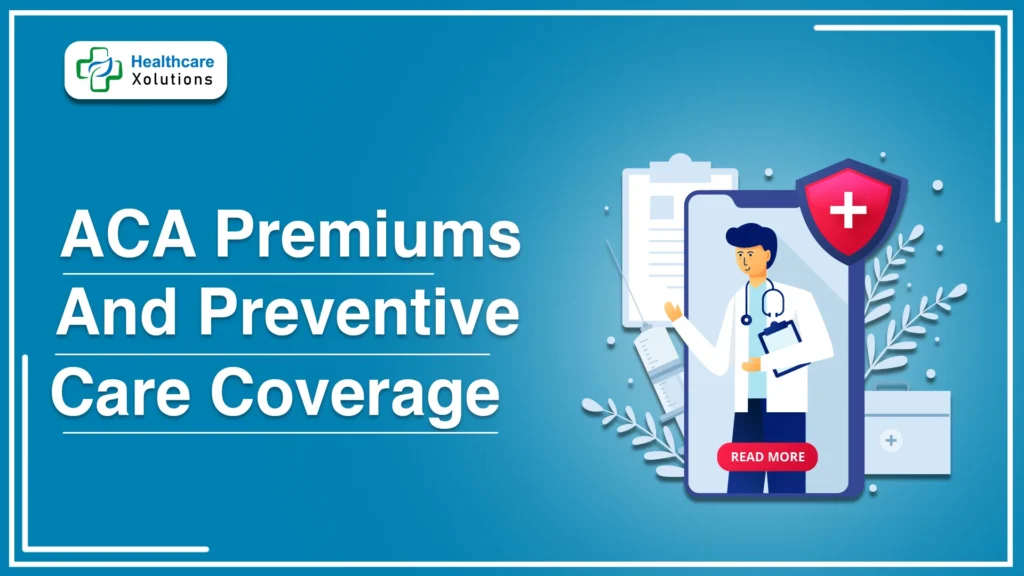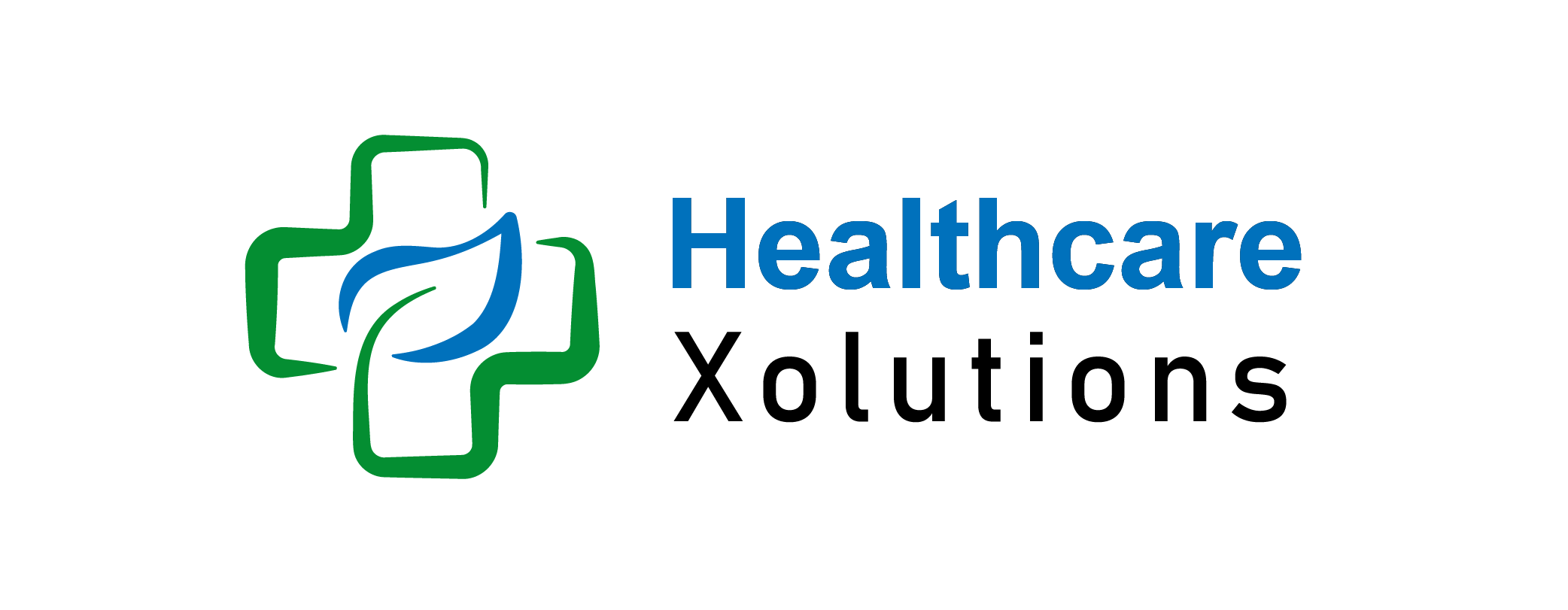ACA Premiums and Preventive Care Coverage: What You Need to Know?

As health insurance enrollment season approaches, understanding the ins and outs of the Affordable Care Act (ACA) can help consumers make informed decisions about their healthcare coverage. ACA premiums and ACA preventive care coverage are two crucial aspects of the ACA that significantly impact both individuals and families.
This article will cover ACA premiums, how they are determined, and what consumers can expect from ACA preventive care coverage.
Key Takeaways:
- Preventive Care Defined Under ACA: ACA-compliant plans cover preventive services like screenings, vaccinations, and counseling without out-of-pocket costs to encourage early detection and management of health issues.
- The goal of Preventive Care: By focusing on early intervention, the ACA aims to reduce overall healthcare costs, benefiting insurers and patients by lowering the need for high-cost treatments.
- Impact on Premiums in the Short and Long Term: While preventive care increases short-term utilization costs, it may stabilize or even reduce premiums over time by reducing high-cost claims through healthier insured populations.
- Wider Utilization of Services: The elimination of cost-sharing encourages more individuals to use preventive services, leading to immediate costs but potentially lower expenses in the future.
- Other Influences on Premiums: Premium rates are also shaped by factors like the age and location of enrollees, healthcare costs, inflation, and subsidies, making preventive care just one piece of the premium equation.
- Potential for Premium Stability: By improving health outcomes and reducing emergency care needs, preventive care may help create more stable ACA premium rates over time, supporting affordability for consumers.
Table of Contents:
What Are ACA Premiums?
Under the ACA, premiums are the monthly payments individuals or families make to maintain their health insurance. These premiums vary based on several factors, including age, location, income level, and household size. Here’s a breakdown of key elements influencing ACA premiums:
- Income-Based Subsidies: Many people qualify for subsidies that lower their premiums, thanks to the ACA’s premium tax credits. These credits are designed to make healthcare more affordable and are based on income and family size.
- Metal Tiers: ACA plans come in four “metal” categories—Bronze, Silver, Gold, and Platinum. Each tier offers varying levels of premiums and out-of-pocket costs, with Bronze plans generally having the lowest premiums but higher out-of-pocket costs, and Platinum plans having higher premiums with lower out-of-pocket costs.
- Age and Tobacco Use: Insurers may charge higher premiums for older adults and tobacco users. However, these charges are capped, ensuring premiums remain within a manageable range.
- Geographic Region: Premiums can also vary significantly by location due to regional healthcare costs and provider availability.
By evaluating their own circumstances and budget, individuals can select an ACA plan with a premium level that aligns with their healthcare needs and financial situation.
What Is ACA Preventive Care Coverage?
One of the standout features of the ACA is its emphasis on preventive care. Preventive care services are designed to help individuals maintain their health, detect potential health issues early, and prevent illnesses from progressing. The ACA mandates that certain preventive services are covered at no additional cost to the policyholder. Here’s what that means for consumers:
- No Out-of-Pocket Costs: ACA-compliant plans cover preventive services without requiring a copay, deductible, or coinsurance. This applies to services like vaccinations, screenings, and counseling.
- Essential Preventive Services: The ACA requires coverage of a broad range of preventive services. These services include immunizations, annual wellness exams, cancer screenings (such as mammograms and colonoscopies), cholesterol tests, and counseling for obesity, tobacco cessation, and mental health support.
- Benefits Across Age Groups: The ACA ensures that preventive care extends across age groups, covering essential health services for children, adolescents, adults, and seniors. This includes screenings and vaccinations that can vary by age, such as pediatric immunizations and annual physical exams for adults.
Preventive care coverage under the ACA has helped make healthcare more accessible and affordable, reducing the financial burden on consumers seeking routine check-ups and screenings.
The Link Between ACA Premiums and ACA Preventive Care Coverage:
The ACA’s approach to preventive care coverage plays a vital role in the structure of its premiums. By emphasizing preventive care, the ACA aims to reduce the overall cost of healthcare by catching health issues early before they develop into costly conditions. This approach supports insurers by lowering the risk of high-cost claims, which can help stabilize premiums over time.
Additionally, when consumers have access to preventive services at no extra cost, they are more likely to use these services, leading to improved population health and reduced healthcare expenditures nationwide. This preventative model can translate to more affordable premiums in the long run, benefiting everyone in the healthcare system.
How to Maximize ACA Preventive Care Coverage Benefits?
For individuals and families enrolled in ACA plans, here are a few tips to get the most out of preventive care benefits:
- Schedule Annual Wellness Visits: Many preventive services, like wellness exams, are covered annually. Use this opportunity to get an overall health assessment and ask your provider about age-appropriate screenings.
- Take Advantage of Screenings and Vaccinations: Check your plan to understand which screenings are fully covered. Staying on top of vaccinations and regular screenings can help prevent serious health issues.
- Seek Counseling Services: Many ACA plans cover counseling for tobacco cessation, mental health, and obesity management. These services can be incredibly valuable in maintaining both physical and mental health.
- Review Plan Benefits Regularly: As healthcare needs change, reviewing your plan benefits annually helps ensure you’re utilizing all covered preventive services, potentially saving you money in the long term.
Understanding ACA premiums and preventive care coverage is essential for making informed decisions during enrollment season. By recognizing how premiums are structured and which preventive services are covered, individuals and families can maximize their health benefits while managing their healthcare costs. The ACA continues to offer valuable resources and protections, enabling consumers to take proactive steps toward their well-being without facing financial strain.
Does ACA Preventive Care Coverage Affect ACA Premiums?
The Affordable Care Act (ACA) has transformed the American healthcare landscape, notably by emphasizing preventive care services. Preventive care aims to avert serious health issues through early detection and lifestyle guidance, which in turn lowers healthcare costs. But does preventive care coverage influence ACA premiums? Let’s take a closer look at how preventive care impacts health insurance costs under the ACA and what this means for consumers and insurers alike.
The Intent Behind Preventive Care Coverage
The focus on preventive care in the ACA stems from the understanding that early intervention can prevent severe health conditions that are often costly to treat. By encouraging routine screenings and vaccinations, the ACA aims to reduce the financial burden on the healthcare system, insurers, and patients. This prevention-focused approach is expected to decrease the demand for high-cost emergency or intensive treatments, theoretically helping control the overall healthcare expenditure.
How May ACA Preventive Care Coverage Influence ACA Premiums?
One of the primary questions regarding ACA premiums is whether the inclusion of preventive services affects the cost of premiums for consumers. Here are a few key ways preventive care may interact with ACA premiums:
1. Risk Pool and Cost Distribution:
Preventive care ideally reduces the overall risk in the insured pool by identifying and managing health conditions early, which, over time, lowers high-cost claims. Healthier individuals and early intervention can balance the cost of high-risk individuals, potentially stabilizing or even reducing premiums in the long term.
2. Short-Term vs. Long-Term Premium Impact:
In the short term, covering preventive services might increase the overall cost to insurers as more people use these services. However, this proactive spending may be offset by lower costs in future years. For example, regular screenings might detect a chronic condition early, leading to less expensive management strategies rather than costlier emergency interventions. This potential cost reduction can influence premium rates over time, creating a balancing effect.
3. Higher Utilization of Services:
With cost barriers removed, preventive services are used more widely under ACA plans. This uptick in utilization does incur costs for insurers initially, which could contribute to premium adjustments. However, the healthier population resulting from increased preventive care use might drive premiums down in the long run.
4. Mandated Coverage Across Plans:
The ACA mandates that all plans cover preventive care without cost-sharing, which standardizes benefits across the marketplace. This uniformity means that preventive care does not necessarily cause a premium increase for specific plans but rather spreads the cost across all enrollees in the ACA marketplace. As a result, any preventive care expenses are built into premiums across the board, offering stability in pricing.
Factors Influencing ACA Premiums Beyond ACA Preventive Care:
While preventive care coverage plays a role, it is just one factor affecting ACA premiums. Several other elements also shape these costs:
1. Age and Location of Enrollees:
Younger enrollees typically have lower premiums than older ones due to their generally lower health risks, though they also contribute to a balanced risk pool. Additionally, healthcare costs vary significantly by region, affecting local ACA premiums.
2. Income Levels and Subsidies:
The ACA provides subsidies to eligible enrollees based on their income, which can offset premium costs significantly. Subsidies reduce the out-of-pocket burden for lower-income individuals, making premiums more affordable and predictable.
3. Healthcare Costs and Inflation:
Rising healthcare costs, including expenses related to medical treatments and medications, also directly impact premium rates. Inflation and changes in healthcare utilization patterns can drive premium adjustments annually.
Can Preventive Care Keep Premiums Stable?
The hope is that preventive care will keep premiums more stable by improving overall health outcomes and reducing the need for costly treatments. Studies have shown that preventive care can lead to better health outcomes, especially for chronic illnesses like diabetes, hypertension, and certain cancers, which require costly management if not caught early. However, since preventive services do increase utilization initially, insurers need to balance immediate costs with long-term savings projections.
For consumers, the focus on preventive care means fewer out-of-pocket expenses for essential health services, and in the broader picture, it could mean more manageable premium costs over time. While preventive care alone doesn’t determine ACA premium rates, it’s a meaningful element in the overall cost structure of health insurance, aiming to create a healthier insured population and ultimately contribute to more stable premiums.
Conclusion – ACA Preventive Care Coverage:
ACA Preventive care coverage under the ACA is a strategic investment designed to lower future healthcare costs by fostering early detection and management of health conditions. Although preventive care adds some immediate costs for insurers, the potential to lower high-cost claims by reducing serious health events is a valuable offset. For consumers, this means accessing essential services without out-of-pocket expenses while potentially benefitting from more stable premiums over time.
The inclusion of preventive care coverage is, therefore, a positive feature for enrollees and the broader healthcare system, potentially keeping ACA premiums more predictable in the long term. As we continue to see the ACA evolve, understanding the interplay between preventive care coverage and premium costs remains essential for consumers seeking affordable, quality healthcare options.
